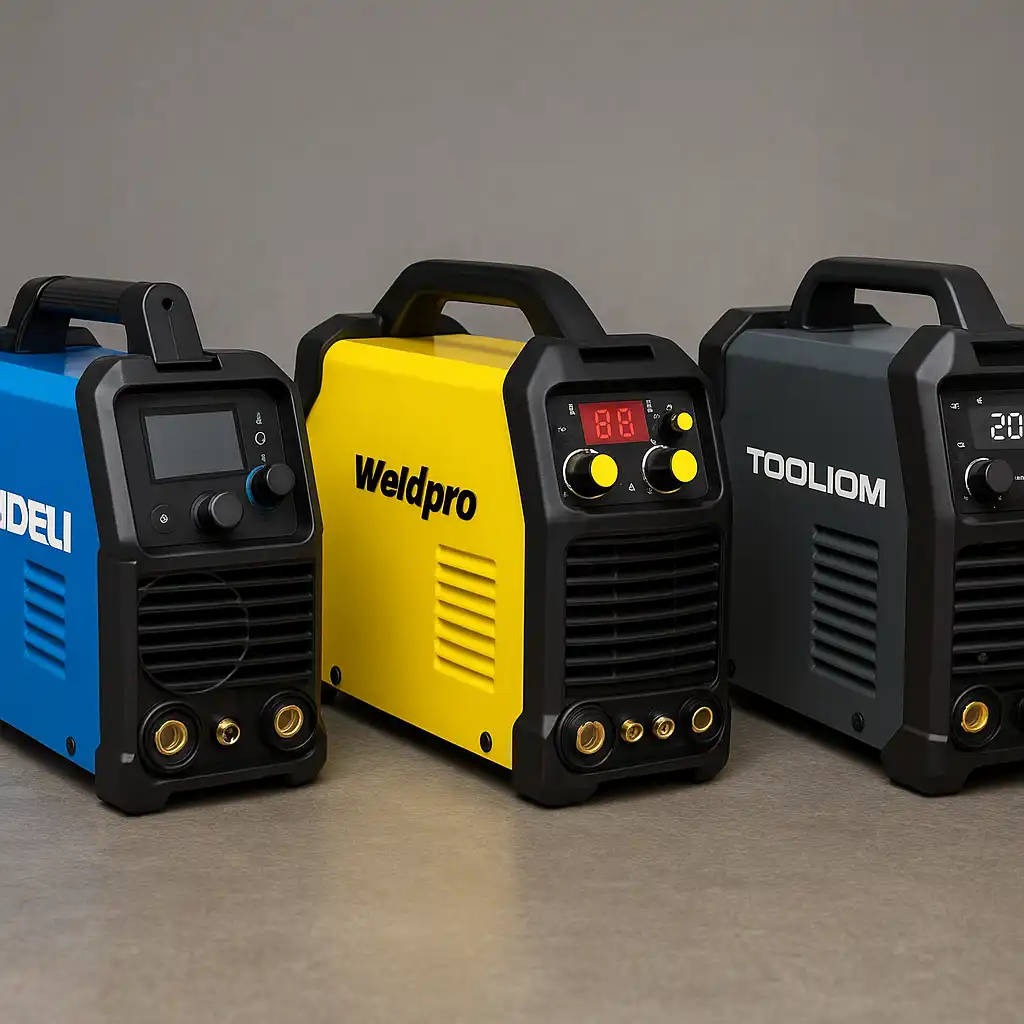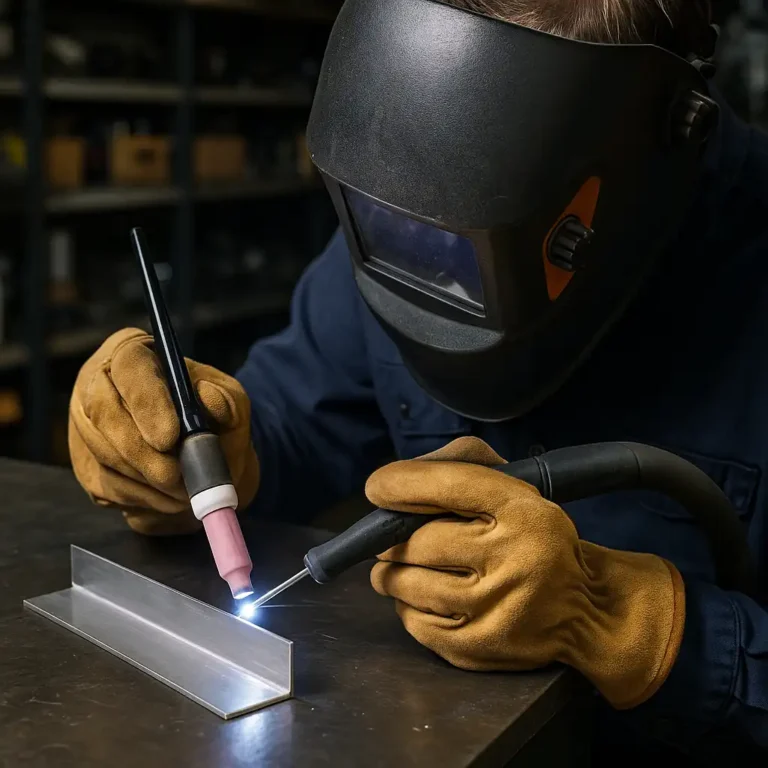Best TIG Welder for Aluminum and Stainless Steel – Top Picks for Clean Welds

Disclosure: This post contains affiliate links. As an Amazon Associate, I earn from qualifying purchases—at no extra cost to you.
Last Updated: August 19, 2025
Welding aluminum and stainless takes more than just steady hands—it takes the right machine. Both metals can be tricky: stainless overheats fast and warps, while aluminum needs strong cleaning action or the welds turn messy. A good TIG welder gives you stable arc control, pulse options, and AC/DC flexibility so you can dial things in for both jobs. Comfort, durability, and price all play a role too, whether you’re fixing farm equipment in the field or running beads in a fab shop.
We’ve lined up three welders that cover different needs—a budget-friendly starter, a solid mid-range machine, and a premium option built for full-time work. If you’re just setting up your shop, check our guide on the best welding machines so you’ve got the rest of your gear covered.
Check Price & Availability
View on Amazon – S7 TIG Welder 200A 3-in-1 Machine
View on Amazon – TOOLIOM 200A AC/DC TIG Welder with Pulse
View on Amazon – ESAB Rogue ET 200IP PRO TIG Welder
Welding Performance & Power Output
Performance is what separates a clean bead from a sloppy one. The S7 TIG Welder runs up to 200 amps, which is plenty for stainless projects, light fab work, or small aluminum repairs in a garage.
The TOOLIOM 200A adds AC/DC modes and pulse control. That’s especially handy if you’re switching between thin stainless sheet and aluminum plate on the same bench.
The ESAB Rogue ET 200IP PRO takes it further with high-frequency start and a 500Hz pulse. Welders who use it say the arc is incredibly stable, making it a go-to for precision stainless and aluminum work.
Portability & Build Quality
Moving your machine shouldn’t feel like hauling a generator. The S7 is light and compact, making it easy to stash in a truck or roll into a small garage.
The TOOLIOM is still portable but built tougher, with a clear LED screen that’s easy to read even through a dusty lens.
The ESAB Rogue is compact but rugged, with IP23S protection so you can run it in the shop or out in the field. Many welders keep it as their daily driver because of how well it holds up.
Ease of Use & Features
Controls matter when you’re wearing gloves and mid-project. The S7 keeps things simple—basic TIG and pulse settings, nothing that’ll confuse a beginner.
The TOOLIOM offers more flexibility. AC balance, spot weld, and multiple TIG modes make it a strong fit for welders working on thin aluminum or mixed jobs.
The ESAB Rogue shines when precision counts. Its HF start is smooth, and the pulse settings give you tight heat control, which really pays off on thin stainless tanks or aluminum sheet metal.
Value for Money & Best Fit
Not every welder needs a premium machine. The S7 is a budget-friendly way to practice TIG and handle small repairs without overspending.
The TOOLIOM 200A is the middle ground—plenty of features, reliable power, and still affordable for hobby welders or small shops.
The ESAB Rogue is for welders who want pro-level consistency. It’s built for long sessions, demanding projects, and steady results day after day.
Quick Comparison Table
| Model | Amperage Range | Input Voltage | Features | Weight | Best For | Price Range |
|---|---|---|---|---|---|---|
| S7 TIG Welder 200A | Up to 200A | 110/220V | ARC, DC TIG, Pulse | Lightweight | Beginners, hobby work | Budget |
| TOOLIOM 200A AC/DC | Up to 200A | 110/220V | AC/DC TIG, Pulse, Spot, LCD | Portable | Hobbyists, small shops | Mid-Range |
| ESAB Rogue ET 200IP PRO | Up to 200A | 110/220V | HF Start, 500Hz Pulse, PFC | Rugged | Pros, precision work | Premium |
Budget-Friendly Pick – S7 TIG Welder 200A 3-in-1 Machine
The S7 is straightforward and affordable. At 200 amps with stick and pulse options, it handles stainless and light aluminum just fine. It’s small, easy to carry, and forgiving enough for someone learning TIG basics.
Mid-Range Option – TOOLIOM 200A AC/DC TIG Welder with Pulse
The TOOLIOM balances cost and features. Dual voltage and AC/DC modes let you jump between stainless and aluminum, while the pulse and spot weld settings make thin sheet metal less stressful. It’s a great fit for hobby welders or small shop owners who want versatility without overspending.
Premium Model – ESAB Rogue ET 200IP PRO TIG Welder
The ESAB Rogue is a compact powerhouse. Its smooth high-frequency start, advanced pulse options, and rugged build make it a favorite among fabricators. Whether you’re welding stainless tanks or doing precision aluminum work, it’s a machine that delivers steady results shift after shift.
FAQs
Q: Why is AC needed for aluminum TIG welding?
A: AC removes the oxide layer that forms on aluminum, leaving a clean puddle and stronger weld.
Q: Can these welders handle both aluminum and stainless?
A: Yes. All three can, but the TOOLIOM and ESAB offer more control than the budget pick.
Q: Which TIG welder is best for beginners?
A: The S7 is simple, affordable, and forgiving—perfect for starting out.
Conclusion
The best TIG welder for aluminum and stainless steel depends on what you’re doing and how much you want to spend. The S7 is a low-cost entry point, the TOOLIOM 200A gives you flexibility without breaking the bank, and the ESAB Rogue ET 200IP PRO is the pro-level choice for consistent, precise welds in the shop or on the jobsite.






